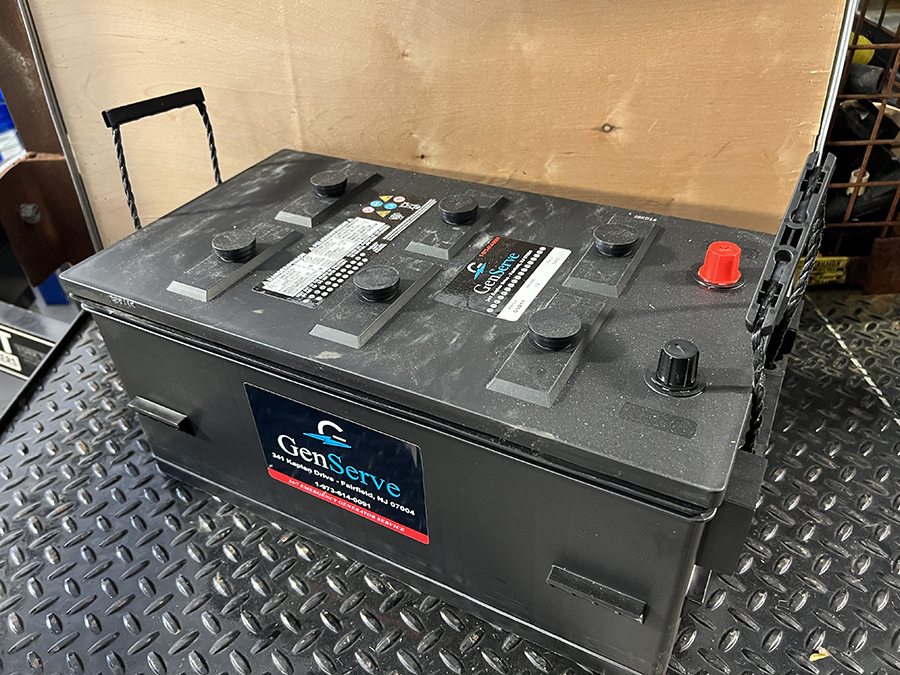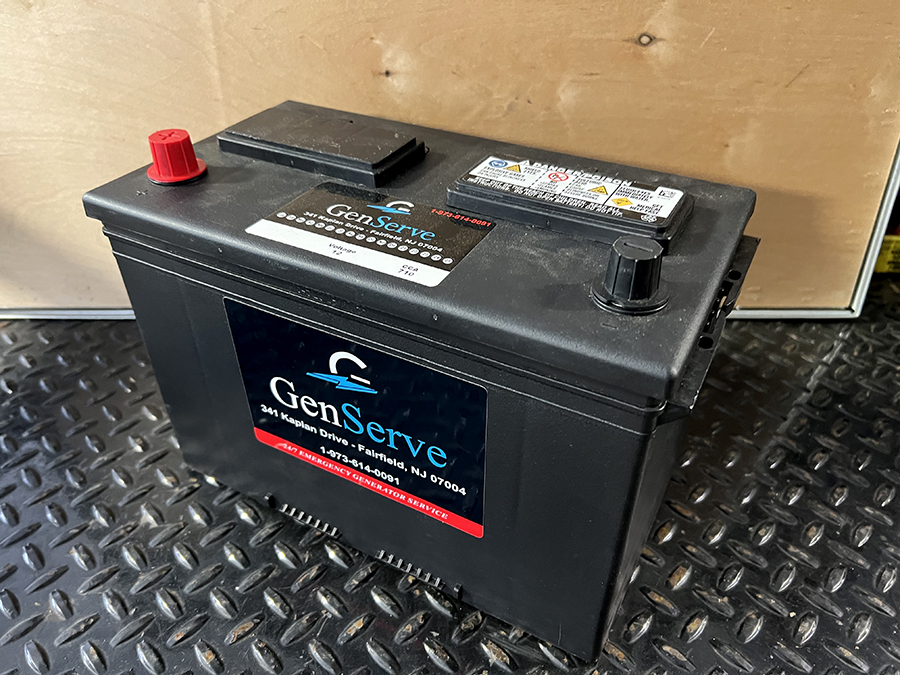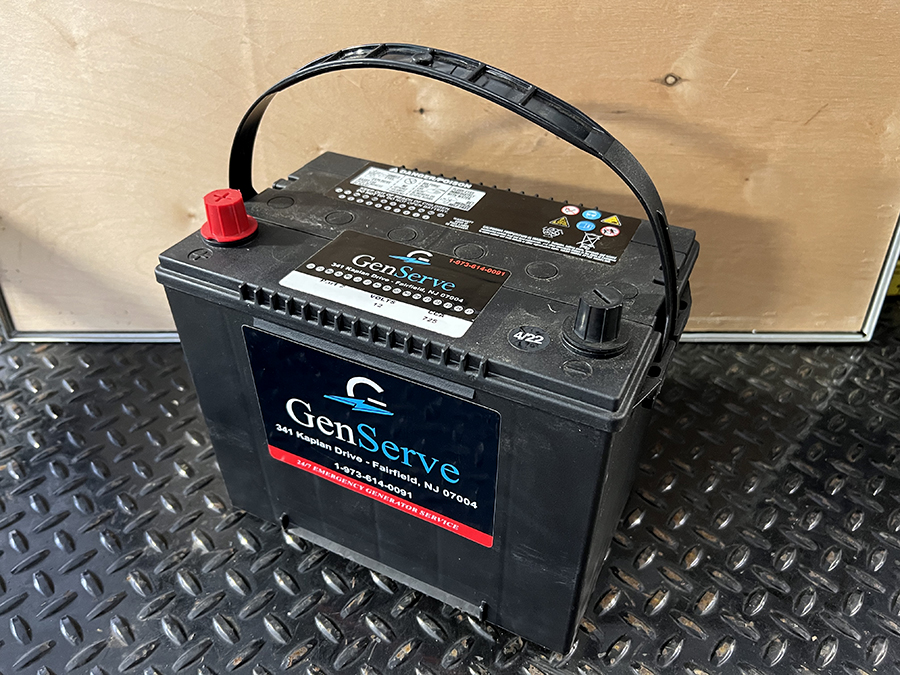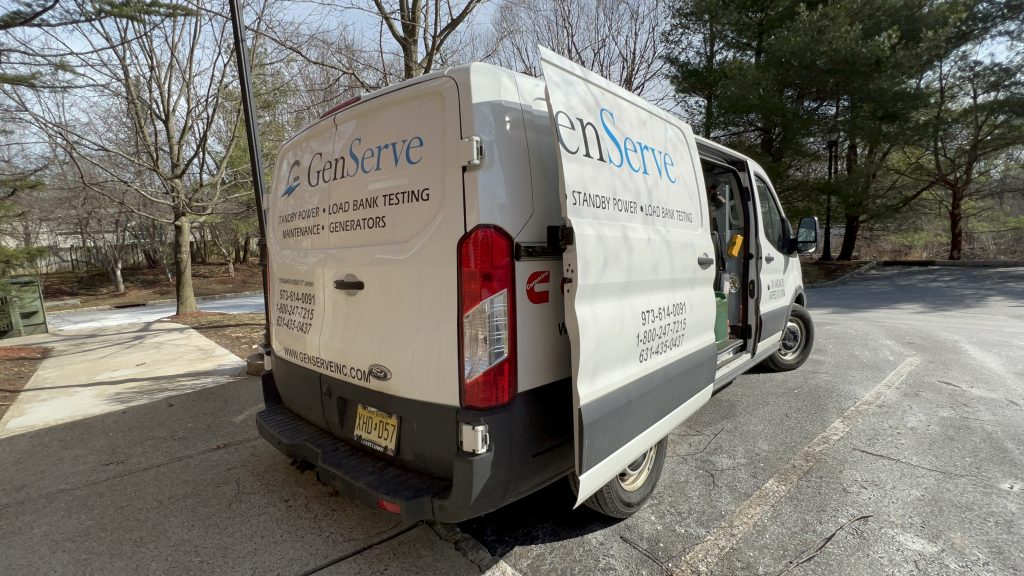Why Is Generator Battery Service Important?
Battery testing and inspection is an essential part of generator preventative maintenance. Batteries are one of the most overlooked generator parts at facilities, yet battery failure is one of the most common causes of generator failure.
Batteries provide power to the generator engine starter when needed. They are the life of the generator and can fail due to age, condition, or declining cold cranking amps.
When performing generator preventative maintenance or emergency service, our technicians will make sure to test the battery, battery charger, all connections and breakers.

Battery Codes and Regulations
There are local codes and regulations for battery replacement regardless of the condition or age. Typically a generator technician will recommend replacing batteries every two to three years for both commercial and residential customers to prevent unexpected failures. NFPA 110 recommends that industrial batteries be replaced every 24 to 30 months for critical facilities. NFPA requires weekly battery inspections to check electrolyte levels in all battery cells on maintainable batteries, and voltage checks on maintenance-free batteries. NFPA also requires monthly checks on both to test for electrolyte specific gravity in all cells for maintainable batteries and conductance tests in maintenance-free batteries. Nicad batteries will have their own procedures. This is why it’s crucial to never skip preventative maintenance services with a certified generator technician.
Since the adoption of the 2012 Life Safety Code in 2016, dozens of facilities and businesses have requested replacement of their maintainable batteries to maintenance-free batteries, this is due to Joint Commission’s enforcement of OSHA instruction STD01–08–002 which requires eyewash stations in all battery changing and battery maintenance areas. An additional safety concern and expense for some businesses.
Common Types of Industrial Batteries
The two most common types of batteries used to supply power to emergency generators are: Maintainable or Vented batteries and Maintenance-free batteries. Both types are acceptable to use with emergency generators by current local standards, but testing will slightly vary between the two.


Battery Voltage
Normal voltage for a typical 12V battery is approximately 12.6V, but a common misconception occurs when testing batteries that show 12V and condition is believed to be acceptable, however batteries with a charge below 12.4V are already nearing failure and will need to be replaced as soon as possible.
Choosing the Right Size Battery for your Generator
The battery size for commercial generators is determined by the generator engine size and configuration and the battery CCA.
All manufacturers provide spec sheets that determine the correct battery size for each unit. The most common industrial batteries are: 4D and 8D batteries used on generators 500 kW and above.
Call our sales team today to learn the recommended quantity and size battery for your generator and setup.






Schedule Service Today
Always follow the battery and generator manufacturers recommendations for battery maintenance and replacement.
Important things to test and document monthly to be in compliance should include: Date and time of battery test, voltage, age, cold cranking amps and outdoor temperature for batteries located outdoors.
Don’t wait any longer, contact our service department today with questions and to schedule preventative maintenance service.

